Download IGNOU MAAN Project & Dissertation (MANI 1, MANP 1, MANI 3)
The IGNOU MAAN Project Dissertation (MANI 1, MANP 1, MANI 3) is a research project where students work together to achieve a common goal. The goals of an anthropological project often differ from the goals of the original group participants. Creating the IGNOU MAAN Project is not as difficult as you think when you first hear it.
Whatsapp us to get the Personalized (Customized) or Readymade IGNOU MAAN Project Dissertation or IGNOU MAAN Synopsis Sample PDF
IGNOU MAAN Project Topics
- Assessment Of Knowledge, Attitudes And Practices Of Mothers Regarding Nutrition
- An Anthropometric Study On Health And Nutritional Practices Of Rural Women Towards Their Children
- Knowledge, Attitude And Practices About Hypertension And Diabetes In Adult Population
- Consumer Behaviour Towards Shopping Malls In Gurgaon
- Climate Change In India: An Analytical Study
- Impact Of Social Networking Sites On Adolescents Of Delhi
- Knowledge, Attitude And Practices (Kap) Analysis About Earthquake Preparedness
- A Study Of Work Life Balance Among Working Women In A Central Government Office In Delhi
- Human Rights Violation Against Women In Delhi
- Influence Of Domestic Violence On Personality Trait And Aggression Among Adolescents
- Impact Of Social Media On Personal Relationships Among Young Children
- Self-Esteem And Depression Of Drug Abuser Adolescents
What should be included in the IGNOU MAAN Project Proposal?
A well-structured MAAN project proposal, typically submitted for the first-year project (MANI-001, MANP-001, MANI-003), should contain the following key sections:
- Title: A clear and concise title that reflects the core theme of your research project.
- Background of the Study: Briefly introduce the context and significance of your chosen topic. Explain why this topic is relevant to the field of anthropology.
- Literature Review: Demonstrate your understanding of existing research on the topic. Briefly summarize relevant academic works, highlighting key findings and debates.
- Rationale of the Study: Explain why your research is important and how it contributes to existing knowledge.
- Objectives of the Study: Clearly outline the specific goals you aim to achieve with your research.
- Hypothesis (Optional): If applicable to your chosen topic, formulate a tentative hypothesis to be tested through your research.
- Research Methodology: Describe the methods you plan to use for data collection. This could include interviews, surveys, participant observation, or any other relevant anthropological methods. Briefly explain how you will select your sample population and analyze the data.
- References/Bibliography: List all the sources you have consulted in your proposal using a standard referencing style (e.g., APA).
How do you conduct fieldwork for your IGNOU MAAN Project Dissertation?
Conducting fieldwork is a crucial part of many anthropological research projects. Here’s a step-by-step guide on how to conduct fieldwork for your MAAN project:
1. Planning and Preparation
- Define Objectives: Clearly define the objectives and scope of your fieldwork.
- Research Questions: Develop specific research questions you aim to answer through fieldwork.
- Literature Review: Conduct a literature review to understand existing research and identify gaps.
2. Ethical Considerations
- Informed Consent: Ensure that participants are fully informed about the nature and purpose of your research and have given their consent to participate.
- Confidentiality: Protect the privacy and confidentiality of your participants.
- Non-Harm: Ensure that your research does not harm the participants in any way.
- Permissions: Obtain necessary permissions from relevant authorities or institutions.
3. Site Selection
- Relevance: Choose a field site that is relevant to your research questions.
- Accessibility: Ensure that the site is accessible and feasible for conducting research within your time and budget constraints.
- Permissions: Obtain necessary permissions to access and conduct research at the site.
4. Developing Research Tools
- Questionnaires/Surveys: Develop questionnaires or surveys if your research involves collecting quantitative data.
- Interview Guides: Prepare interview guides with open-ended questions for qualitative data collection.
- Observation Guides: Create observation guides to record specific behaviors, events, or interactions.
5. Data Collection Methods
- Participant Observation: Engage with the community and observe daily activities, rituals, and interactions. Take detailed notes.
- Interviews: Conduct structured or semi-structured interviews with participants to gather in-depth information.
- Surveys: Administer surveys to collect quantitative data.
- Focus Groups: Organize focus group discussions to gather diverse perspectives on a topic.
- Photography/Video: Use photography or video to document events, activities, and contexts (with participant consent).
6. Fieldwork Execution
- Engage with the Community: Build rapport with community members to gain their trust and cooperation.
- Adaptability: Be flexible and adapt to unexpected situations or changes in the field.
- Detailed Recording: Keep detailed field notes, including date, time, location, and context of observations and interactions.
- Regular Review: Regularly review your data and notes to identify patterns and areas needing further exploration.
7. Data Management
- Organize Data: Systematically organize your field notes, recordings, and collected data.
- Backup Data: Ensure that all data is backed up securely to prevent loss.
- Transcription: Transcribe interviews and focus group discussions as soon as possible.
8. Data Analysis
- Coding: Code qualitative data to identify themes, patterns, and categories.
- Statistical Analysis: Use appropriate statistical methods to analyze quantitative data.
- Triangulation: Use multiple data sources and methods to validate your findings.
9. Reporting
- Structure: Structure your report with clear sections: introduction, literature review, methodology, results, discussion, conclusion, and references.
- Clarity: Present your findings clearly and coherently, with supporting evidence.
- Visuals: Use tables, charts, and images to enhance the presentation of your data.
10. Reflection and Feedback
- Reflect on Fieldwork: Reflect on your fieldwork experience, noting what worked well and what could be improved.
- Seek Feedback: Seek feedback from your academic supervisor and peers to refine your analysis and report.
How should the MAAN project report be formatted?
- Font and Spacing: Follow the specific formatting guidelines provided by IGNOU.
- Structure: Ensure the report is well-organized with clear headings and subheadings.
- Length: Adhere to the word/page limit specified by the university.
Can you change your IGNOU MAAN Project topic after initial approval?
Possibly, but it depends on the stage of the project and the reason for the change. Here’s what to consider:
- Early Stage: If you’re in the early stages of your project (soon after initial approval) and haven’t begun significant data collection, changing the topic might be feasible.
- Reason for Change: A strong justification for the change will be crucial. Perhaps you encountered unforeseen challenges with your initial topic, or you discovered a more compelling research avenue.
- Approval Process: You’ll likely need to submit a revised proposal outlining the new topic and rationale for the change. This revised proposal will need approval from your supervisor or the designated IGNOU department.
- Later Stages: Changing the topic becomes more difficult the further you progress in your research. Significant time and effort might already be invested in the initial topic.
Here are some steps you can take:
- Discuss with Supervisor: Talk to your project supervisor about your desire to change the topic. Explain the reasons for the change and explore their perspective.
- Evaluate Feasibility: Assess the practicalities of changing the topic. Can you salvage any existing data for the new topic? Will you have enough time to complete the research with a new focus?
- Prepare Revised Proposal: If your supervisor is receptive, prepare a revised proposal outlining the new topic, its significance, and research methodology.
- Seek Formal Approval: Submit the revised proposal through the appropriate channels at IGNOU for official approval.
What are common mistakes to avoid in the MAAN project report?
- Poor Planning: Starting late and not managing time effectively.
- Lack of Clarity: Writing that is unclear or lacks focus.
- Ignoring Guidelines: Failing to follow the specific guidelines provided by IGNOU.
- Inadequate Analysis: Superficial analysis or not thoroughly interpreting the data.
- Ethical Oversights: Neglecting ethical considerations in research.
How do you handle data analysis for your IGNOU MAAN Project?
Data analysis for your MAAN project will depend on the type of data you collected and your research objectives. Here’s a general approach to consider:
Data Organization:
- Quantitative Data: If you collected numerical data through surveys or questionnaires, you’ll likely use statistical software like SPSS to organize and analyze it.
- Qualitative Data: If your data comes from interviews, observations, or field notes, you’ll need to organize it thematically. Consider using software like NVivo or simply a coding system on paper.
Exploratory Analysis:
- Get familiar with your data. Look for patterns, trends, or central themes. Use descriptive statistics (e.g., frequency tables, measures of central tendency) for quantitative data.
Choose Appropriate Techniques:
- Depending on your research questions and data type, select appropriate analytical techniques.
- Quantitative Data: Chi-square tests, correlation coefficients, regression analysis can be used to explore relationships between variables.
- Qualitative Data: Thematic analysis, discourse analysis, grounded theory can help identify recurring themes and patterns in your data.
Software and Resources:
- Consider using statistical software like SPSS for quantitative analysis.
- For qualitative analysis, software like NVivo can be helpful, but manual coding can also be effective.
- IGNOU might offer workshops or resources on data analysis methods. Explore their website or consult your supervisor for guidance.
Interpretation and Presentation:
- Analyze the results of your chosen techniques in light of your research questions.
- Present your findings in tables, graphs, or quotes (depending on data type) to clearly communicate your analysis.
What should you do if you need an extension for your IGNOU MAAN Project submission?
If you find yourself needing an extension for your MAAN project submission, here are the steps you should take:
- Justify the Need: The most crucial step is to have a valid reason for requesting an extension. This could include:
- Unexpected personal circumstances: A medical emergency, family issues, or other unforeseen events that significantly impacted your ability to work on the project.
- Research Challenges: Perhaps you encountered difficulties with data collection, methodological issues, or delays in obtaining necessary permissions.
- Valid Project Reason: In some cases, the complexity of your research topic or the need for additional data analysis might warrant an extension.
- Prepare a Formal Request: Write a formal letter or email requesting an extension for your project submission. The request should include:
- Your Enrollment Details: Mention your name, enrollment number, program (MAAN), and project course code (e.g., MANI-001, MANP-001).
- Reason for Extension: Clearly explain the reason for requesting an extension and provide supporting documents if possible (e.g., medical certificate).
- Proposed New Deadline: Specify the new deadline you’re requesting for project submission. Be realistic and consider the time needed to complete your work.
- Submit the Request: Address your request to the appropriate authority at IGNOU. This might be the Director of your Regional Study Centre (RSC) or the Coordinator of the MAAN program depending on specific IGNOU guidelines.
- Follow Up: It’s advisable to follow up on your request after a reasonable waiting period. You can politely inquire about the status of your extension request.
How do you format tables and figures in your MAAN report?
- Consistency: Ensure all tables and figures are consistently formatted and labeled.
- Captions: Include descriptive captions for all tables and figures.
- Referencing: Refer to tables and figures in the text of your report.
What are common mistakes to avoid in the MAAN project report?
- Poor Planning: Starting late and not managing time effectively.
- Lack of Clarity: Writing that is unclear or lacks focus.
- Ignoring Guidelines: Failing to follow the specific guidelines provided by IGNOU.
- Inadequate Analysis: Superficial analysis or not thoroughly interpreting the data.
- Ethical Oversights: Neglecting ethical considerations in research.
Get our expert help for your IGNOU MAAN Project Synopsis Sample Pdf
- Call us or WhatsApp us at: 9958947060, 9354637830
- Visit: SHRICHAKRADHAR.COM
Check the topics below and get downloaded the MAAN Project Synopsis Sample PDF
Search the relevant topics below and download the readymade IGNOU MAAN Project Dissertation & IGNOU MAAN Synopsis Sample PDF
Note: These are readymade IGNOU MAAN Project Synopsis Dissertation that are already written so that students can learn how to write them. A lot of students might think about getting them. IGNOU doesn’t accept projects that have already been turned in by other students. If you want a project that has never been turned in by another student and that we promise will be approved, WhatsApp us at 9958947060 and include the topic of your project.
-
Sale!

-
Sale!

IGNOU MAAN Project (MANP 001) Synopsis/Proposal & Project Report/Dissertation in Soft-Copy (Sample-19)
Original price was: ₹500.00.₹149.00Current price is: ₹149.00. -
Sale!

IGNOU MAAN Project (MANP 001) Synopsis/Proposal & Project Report/Dissertation in Soft-Copy (Sample-18)
Original price was: ₹500.00.₹149.00Current price is: ₹149.00. -
Sale!

IGNOU MAAN Project (MANP 001) Synopsis/Proposal & Project Report/Dissertation in Soft-Copy (Sample-17)
Original price was: ₹500.00.₹149.00Current price is: ₹149.00. -
Sale!

IGNOU MAAN Project (MANP 001) Synopsis/Proposal & Project Report/Dissertation in Soft-Copy (Sample-16)
Original price was: ₹500.00.₹149.00Current price is: ₹149.00. -
Sale!

IGNOU MAAN Project (MANP 001) Synopsis/Proposal & Project Report/Dissertation in Soft-Copy (Sample-15)
Original price was: ₹500.00.₹149.00Current price is: ₹149.00. -
Sale!

IGNOU MAAN Project (MANP 001) Synopsis/Proposal & Project Report/Dissertation in Soft-Copy (Sample-14)
Original price was: ₹500.00.₹149.00Current price is: ₹149.00. -
Sale!

IGNOU MAAN Project (MANP 001) Synopsis/Proposal & Project Report/Dissertation in Soft-Copy (Sample-13)
Original price was: ₹500.00.₹149.00Current price is: ₹149.00. -
Sale!

IGNOU MAAN Project (MANP 001) Synopsis/Proposal & Project Report/Dissertation in Soft-Copy (Sample-12)
Original price was: ₹500.00.₹149.00Current price is: ₹149.00. -
Sale!

IGNOU MAAN Project (MANP 001) Synopsis/Proposal & Project Report/Dissertation in Soft-Copy (Sample-11)
Original price was: ₹500.00.₹149.00Current price is: ₹149.00. -
Sale!

IGNOU MAAN Project (MANP 001) Synopsis/Proposal & Project Report/Dissertation in Soft-Copy (Sample-10)
Original price was: ₹500.00.₹149.00Current price is: ₹149.00. -
Sale!

IGNOU MAAN Project (MANP 001) Synopsis/Proposal & Project Report/Dissertation in Soft-Copy (Sample-9)
Original price was: ₹500.00.₹149.00Current price is: ₹149.00. -
Sale!

IGNOU MAAN Project (MANP 001) Synopsis/Proposal & Project Report/Dissertation in Soft-Copy (Sample-8)
Original price was: ₹500.00.₹149.00Current price is: ₹149.00. -
Sale!

IGNOU MAAN Project (MANP 001) Synopsis/Proposal & Project Report/Dissertation in Soft-Copy (Sample-7)
Original price was: ₹500.00.₹149.00Current price is: ₹149.00. -
Sale!
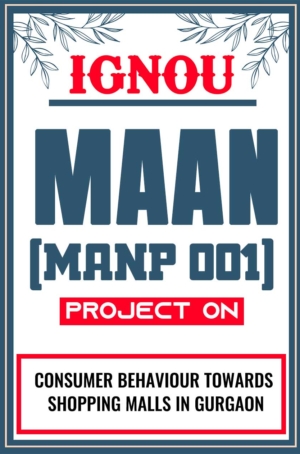
IGNOU MAAN Project (MANP 001) Synopsis/Proposal & Project Report/Dissertation in Soft-Copy (Sample-6)
Original price was: ₹500.00.₹149.00Current price is: ₹149.00. -
Sale!
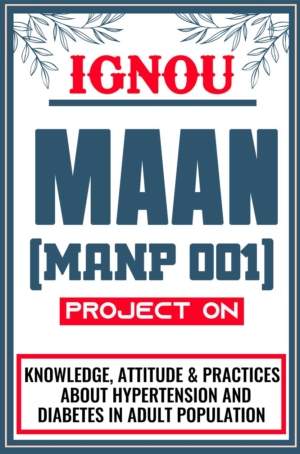
IGNOU MAAN Project (MANP 001) Synopsis/Proposal & Project Report/Dissertation in Soft-Copy (Sample-5)
Original price was: ₹500.00.₹149.00Current price is: ₹149.00. -
Sale!
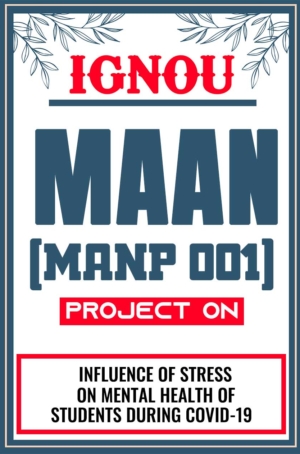
IGNOU MAAN Project (MANP 001) Synopsis/Proposal & Project Report/Dissertation in Soft-Copy (Sample-4)
Original price was: ₹500.00.₹149.00Current price is: ₹149.00. -
Sale!

IGNOU MAAN Project (MANP 001) Synopsis/Proposal & Project Report/Dissertation in Soft-Copy (Sample-3)
Original price was: ₹500.00.₹149.00Current price is: ₹149.00. -
Sale!
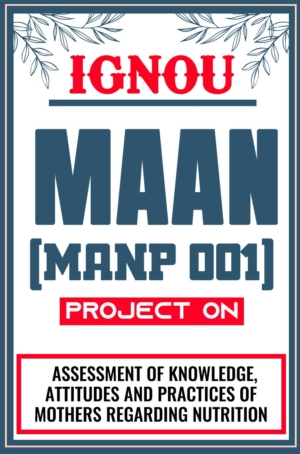
IGNOU MAAN Project (MANP 001) Synopsis/Proposal & Project Report/Dissertation in Soft-Copy (Sample-2)
Original price was: ₹500.00.₹149.00Current price is: ₹149.00. -
Sale!
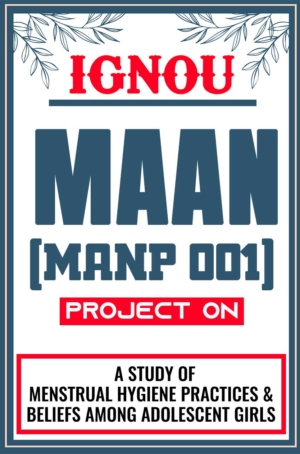
IGNOU MAAN Project (MANP 001) Synopsis/Proposal & Project Report/Dissertation in Soft-Copy (Sample-1)
Original price was: ₹500.00.₹149.00Current price is: ₹149.00.
